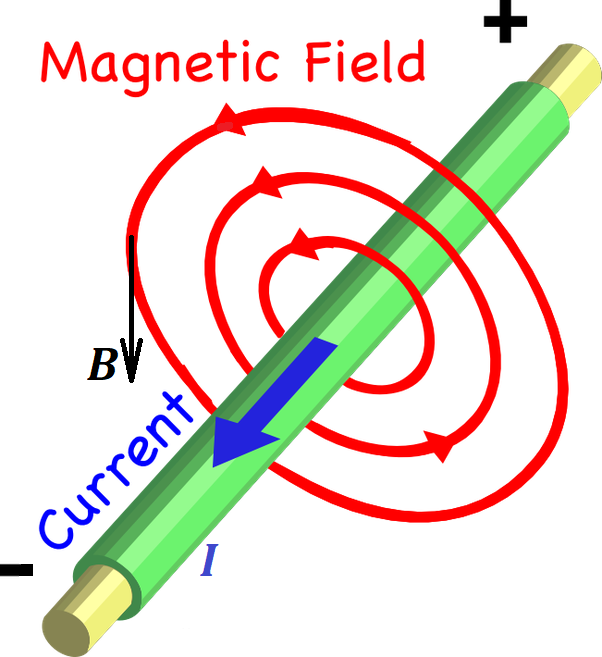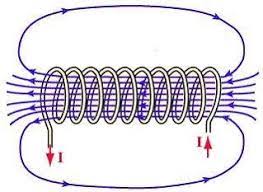Electromagnetic Field Equations 2
We continue discussion of certain laws related to properties of electromagnetic field expressed in a format of equations.
We assume that the concepts of electric and magnetic fields are known by now from the "Electromagnetism" part of this course.
It's also important to go through the previous lectures of this topic "Field Waves", especially "E-M Equations 1".
One of the concepts introduced in the "Electromagnetism" part of this course is magnetic field intensity B - a vector defined at each point of space where magnetic field exists, that is a vector field, acting as a force on any moving charge proportional to its amount and its speed in the direction perpendicular to both the direction of magnetic field intensity vectors and to the direction of the moving charge.
As an example, consider a magnetic field produced by an infinitely long infinitesimally thin wire with constant electric current I flowing through it.

This wire is the source of a magnetic field with circular magnetic lines around the wire and tangential to these lines vectors of magnetic field intensity B=μI/(2πr).
Here the constant r is the distance from the wire and the constant μ is the permeability of the media around the wire. In many cases it's expressed as μ=μ0·μr, where μ0 is permeability of the vacuum and μr=μ/μ0 is relative permeability of a media.
In general, a magnetic field intensity B (a vector in three-dimensional space) produces a force Fm (also a vector) on any charge q moving with velocity V (also a vector):
Fm = q·(V⨯B)
An important difference between electric field lines and magnetic field lines is that magnetic ones are always cyclical, they do not have a beginning or end.
The electric field lines are always initiated at some source and do not end where they are initiated. That's why we have a non-zero electric field flux through a closed surface around an electric charge, which is called monopole.
In case of magnetic field the situation is different in a sense that there is no such thing as magnetic monopole. Every magnet has two poles, which we call north and south, every magnet is dipole, and magnetic lines around it are always closed in some kind of a loop, as the picture above shows.
Here is another example of circular magnetic field lines around a solenoid. Each magnetic field line goes from one pole into another and loops back.

An important consequence of this property of magnetic field lines is that the magnetic field flux through any closed surface, whether there is a source of magnetic field inside it or not, is zero.
In other words, there is no magnetic monopole, and that is exactly the Gauss Law for magnetic field
Mathematically, it can be expressed as
ΦM(S) = 0
where S is any closed surface.
The meaning of this equation is that magnetic field lines are entering and the same lines exiting the closed surface, there is no unbalanced source of magnetic lines (that is, unbalanced magnetic field source) inside this surface.
It can also be expressed differentially, as we did in the previous lecture
Consider any magnetic field in three-dimensional coordinate space with vector B(x,y,z) of its intensity. The X-, Y- and Z-components of this vector are Bx(x,y,z), By(x,y,z) and Bz(x,y,z).
Then the Gauss Law for this magnetic field states
∂Bx(x,y,z)/∂x +
+ ∂By(x,y,z)/∂y +
+ ∂Bz(x,y,z)/∂z = 0
To simplify a notation, mathematicians came up with a construction that looks like a vector with three components:
∇ = {∂/∂x, ∂/∂x, ∂/∂x}
Then a construction that resembles a scalar (dot) product of this pseudo-vector ∇ and a real vector
∇·B=∂Bx/∂x+∂By/∂y+∂Bz/∂z
With all these assumptions the Gauss Law for magnetic field in this differential form looks really short and simple:
∇·B = 0
The above equation is the second of four Maxwell differential equations that describe the electromagnetic field.


No comments:
Post a Comment